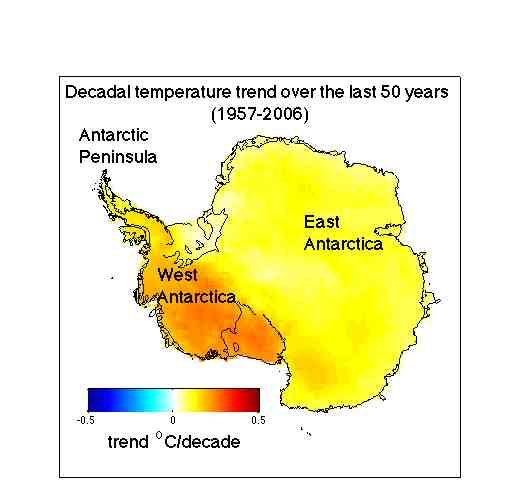Guest commentary by David Karoly, Professor of Meteorology at the University of Melbourne in Australia
On Saturday 7 February 2009, Australia experienced its worst natural disaster in more than 100 years, when catastrophic bushfires killed more than 200 people and destroyed more than 1800 homes in Victoria, Australia. These fires occurred on a day of unprecedented high temperatures in south-east Australia, part of a heat wave that started 10 days earlier, and a record dry spell.
This has been written from Melbourne, Australia, exactly one week after the fires, just enough time to pause and reflect on this tragedy and the extraordinary weather that led to it. First, I want to express my sincere sympathy to all who have lost family members or friends and all who have suffered through this disaster.
There has been very high global media coverage of this natural disaster and, of course, speculation on the possible role of climate change in these fires. So, did climate change cause these fires? The simple answer is “No!” Climate change did not start the fires. Unfortunately, it appears that one or more of the fires may have been lit by arsonists, others may have started by accident and some may have been started by fallen power lines, lightning or other natural causes.
Maybe there is a different way to phrase that question: In what way, if any, is climate change likely to have affected these bush fires?
[Read more…] about Bushfires and extreme heat in south-east Australia

 The paper shows that Antarctica has been warming for the last 50 years, and that it has been warming especially in West Antarctica (see the figure). The results are based on a statistical blending of satellite data and temperature data from weather stations. The results don’t depend on the statistics alone. They are backed up by independent data from automatic weather stations, as shown in our paper as well as in updated work by Bromwich, Monaghan and others (see their AGU abstract,
The paper shows that Antarctica has been warming for the last 50 years, and that it has been warming especially in West Antarctica (see the figure). The results are based on a statistical blending of satellite data and temperature data from weather stations. The results don’t depend on the statistics alone. They are backed up by independent data from automatic weather stations, as shown in our paper as well as in updated work by Bromwich, Monaghan and others (see their AGU abstract,